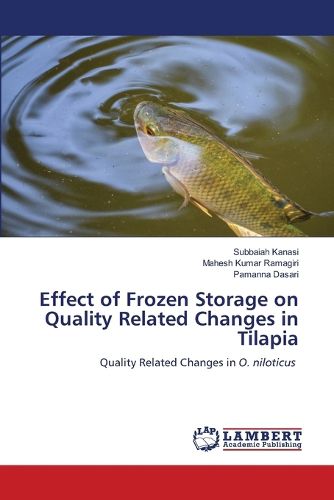Readings Newsletter
Become a Readings Member to make your shopping experience even easier.
Sign in or sign up for free!
You’re not far away from qualifying for FREE standard shipping within Australia
You’ve qualified for FREE standard shipping within Australia
The cart is loading…






This title is printed to order. This book may have been self-published. If so, we cannot guarantee the quality of the content. In the main most books will have gone through the editing process however some may not. We therefore suggest that you be aware of this before ordering this book. If in doubt check either the author or publisher’s details as we are unable to accept any returns unless they are faulty. Please contact us if you have any questions.
The principle objective of this book was to assess changes during frozen storage the moisture, ash and protein contents of tilapia steaks were found to decrease gradually except lipid content. All the quality indices increased gradually due to protein degradation and lipid oxidation. The electrophoretic pattern of SSP degradation showed that the myofibrillar protein was degrading slowly at initial level but it was prominent after 90th day onwards. From the histochemical studies it was found that muscle fiber bundles broken into smaller pieces and the muscle tissues lost their integration. The sensory data showed that the tilapia steaks were still in acceptable condition at the end of 150 days of frozen storage period. Texture analysis of muscles indicated that the muscle tissues lost their original textural characteristics due to breakdown of myofibrillar protein during frozen storage period. The bacterial count increased slowly during the frozen storage period, but no significant difference was found. However, further research is needed to minimize the loss of muscle and textural quality during frozen storage of tilapia fish.
$9.00 standard shipping within Australia
FREE standard shipping within Australia for orders over $100.00
Express & International shipping calculated at checkout
This title is printed to order. This book may have been self-published. If so, we cannot guarantee the quality of the content. In the main most books will have gone through the editing process however some may not. We therefore suggest that you be aware of this before ordering this book. If in doubt check either the author or publisher’s details as we are unable to accept any returns unless they are faulty. Please contact us if you have any questions.
The principle objective of this book was to assess changes during frozen storage the moisture, ash and protein contents of tilapia steaks were found to decrease gradually except lipid content. All the quality indices increased gradually due to protein degradation and lipid oxidation. The electrophoretic pattern of SSP degradation showed that the myofibrillar protein was degrading slowly at initial level but it was prominent after 90th day onwards. From the histochemical studies it was found that muscle fiber bundles broken into smaller pieces and the muscle tissues lost their integration. The sensory data showed that the tilapia steaks were still in acceptable condition at the end of 150 days of frozen storage period. Texture analysis of muscles indicated that the muscle tissues lost their original textural characteristics due to breakdown of myofibrillar protein during frozen storage period. The bacterial count increased slowly during the frozen storage period, but no significant difference was found. However, further research is needed to minimize the loss of muscle and textural quality during frozen storage of tilapia fish.